Chelsea 2025: Trends to Try at Home
Take a look at the latest trends at RHS Chelsea 2025. From stylish wildlife gardens to spaces of calm and retreat, there's a lot to take from this year's show.
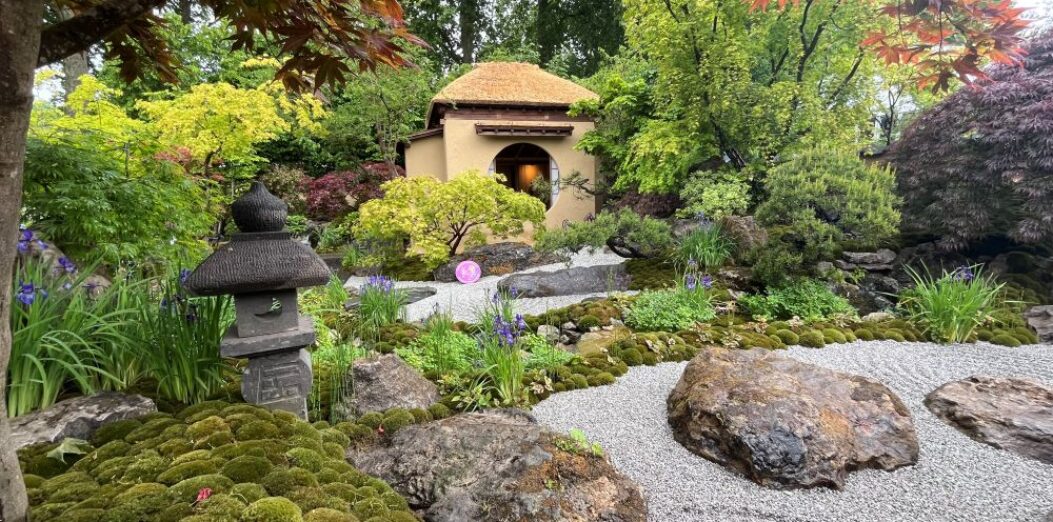
In this blog, I’ll uncover eight 2025 trends, some of which you may like to try at home…
1. Encouraging Wildlife With Style
- Something I really loved about this year’s show was how encouraging wildlife had been consciously designed into many of the gardens with lovely aesthetic features that were designed specifically to attract wildlife.
- The Songbird Survival Garden, focussed on habitat-friendly features to entice small garden birds and included a gorgeous bird hide, as well as planting to provide food throughout the year and rain chains to direct water for drinking.
- The Making Life Better with Bees Balcony Garden was designed to demonstrate that even the smallest outdoor urban spaces can support bees and biodiversity, with vibrant plants to attract pollinators, along with a hexagonal ‘honeycomb’ wall to provide homes for solitary bees.
- Even in the pavilion there were wonderful displays demonstrating how to encourage wildlife into our spaces. The Blooming Numbers Garden as part of The Sainsbury Laboratory at the University of Cambridge gave visitors the chance to see how plants attract bees and how bees perceive flowers. The Garden had a beehive style bug hotel, a shallow water feature in the Fibonacci spiral and bee friendly planting.
- Sustainable techniques were used to build some gardens: for example, the walls and pergola in the Killik & Co ‘Save for a Rainy-Day Garden’ were 3D printed on-site during the build which produced less waste and CO2 as well as reducing construction time.
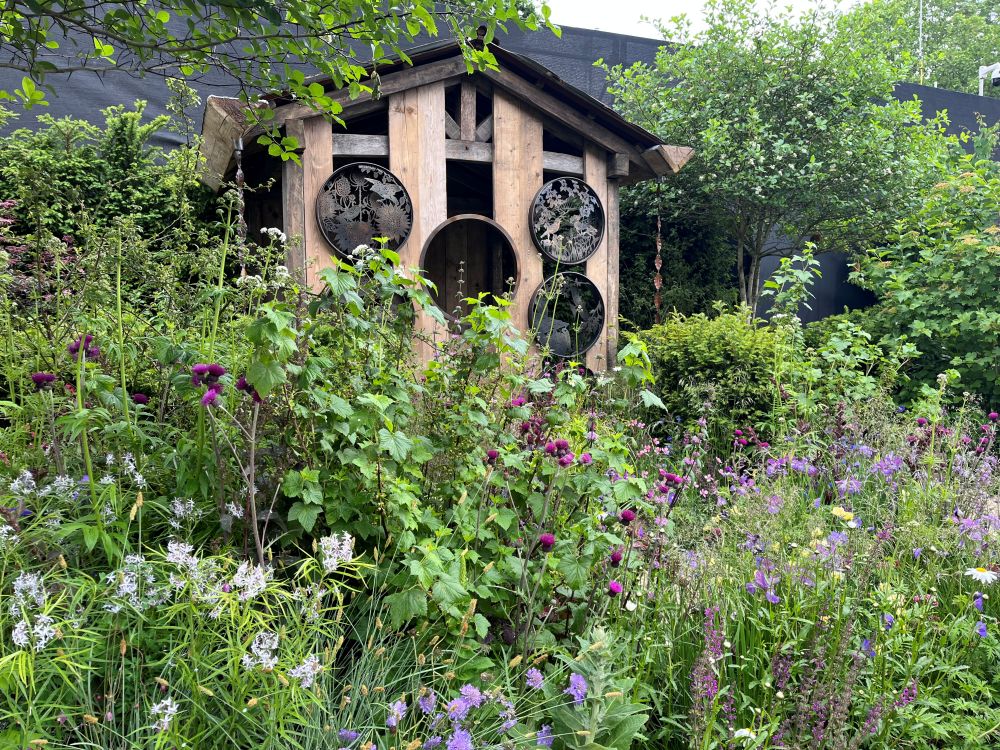

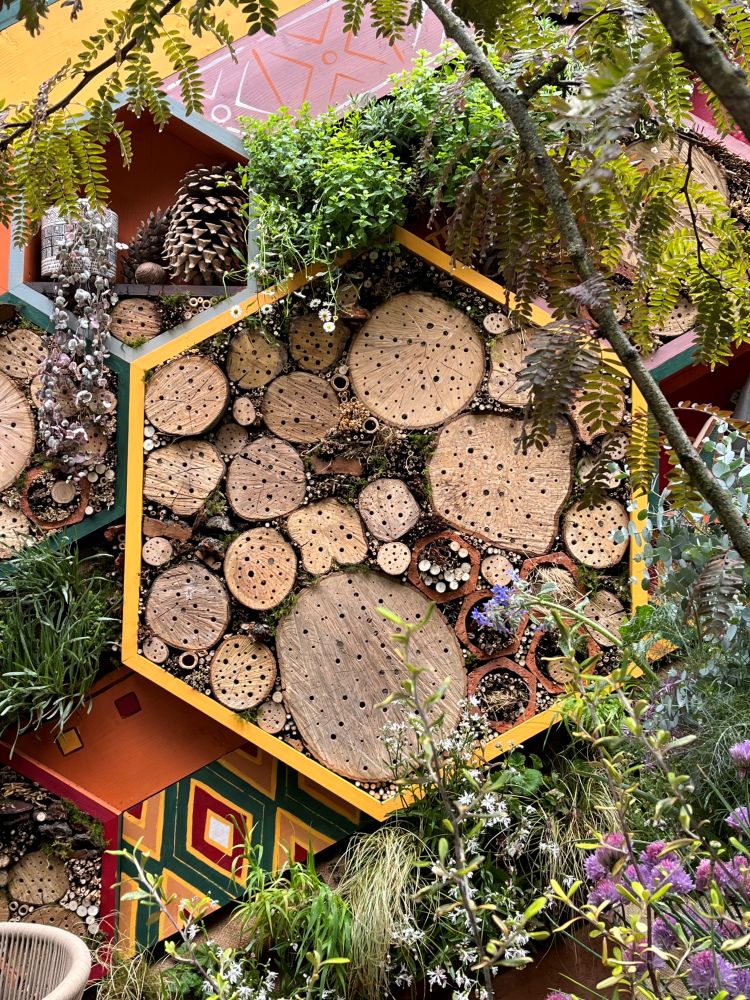
2. Using Technology
- New and future possible uses of technology in gardens and horticulture were showcased, showing a step towards embracing tech and looking at the benefits it may offer to gardeners in the future.
- The Avanade Intelligent Garden used AI to monitor tree health. Through a web-based app, visitors could have a ‘conversation’ with a tree to learn about its care and take appropriate action, such as giving it more or less water.
- The Killik & Co’s Save for a Rainy Day Garden was designed around the concept of climate resilience, featuring innovative constuction for water-harvesting and management.
3. The Benefits of Garden Structures
- Vertical structures were featured heavily in the designs this year on every scale. They successfully demonstrated how to utilise vertical space and create height and interest, often around seating areas.
- The London Square Chelsea Pensioners Garden had the most beautiful arches nestled amongst the trees creating an impactful feature over a beautiful seating area.
- On a smaller scale, the Room to Breathe Hospital Garden used a corner pergola amongst lush, raised planters to create a space to hang a lovely wooden egg chair. This demonstrated a great way to create a cosy corner of your garden.
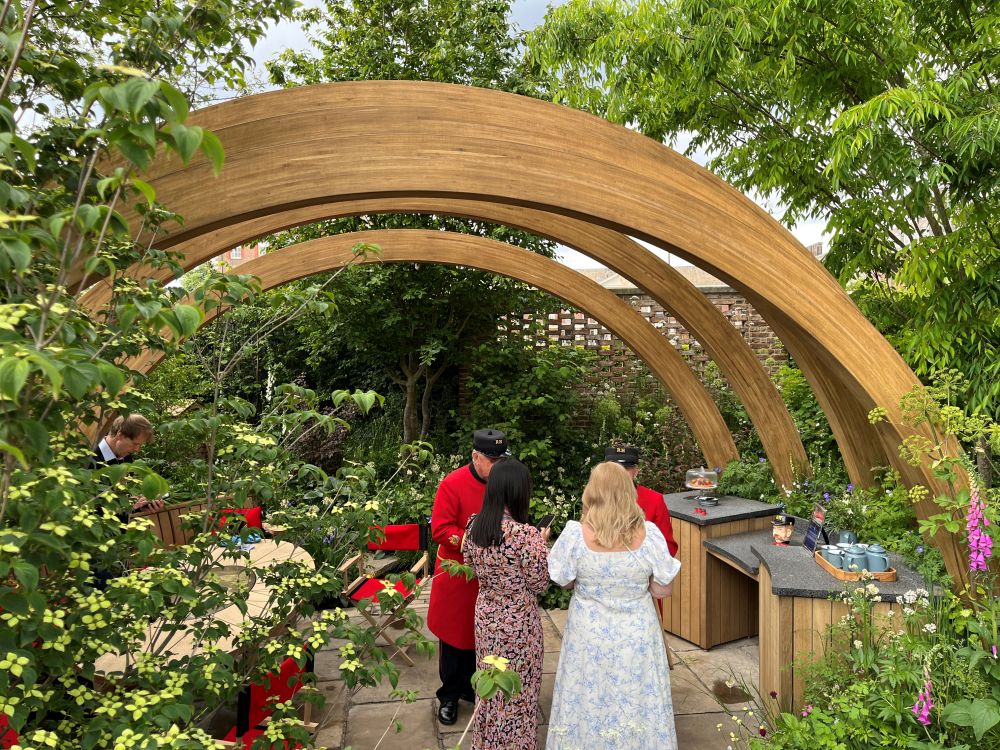

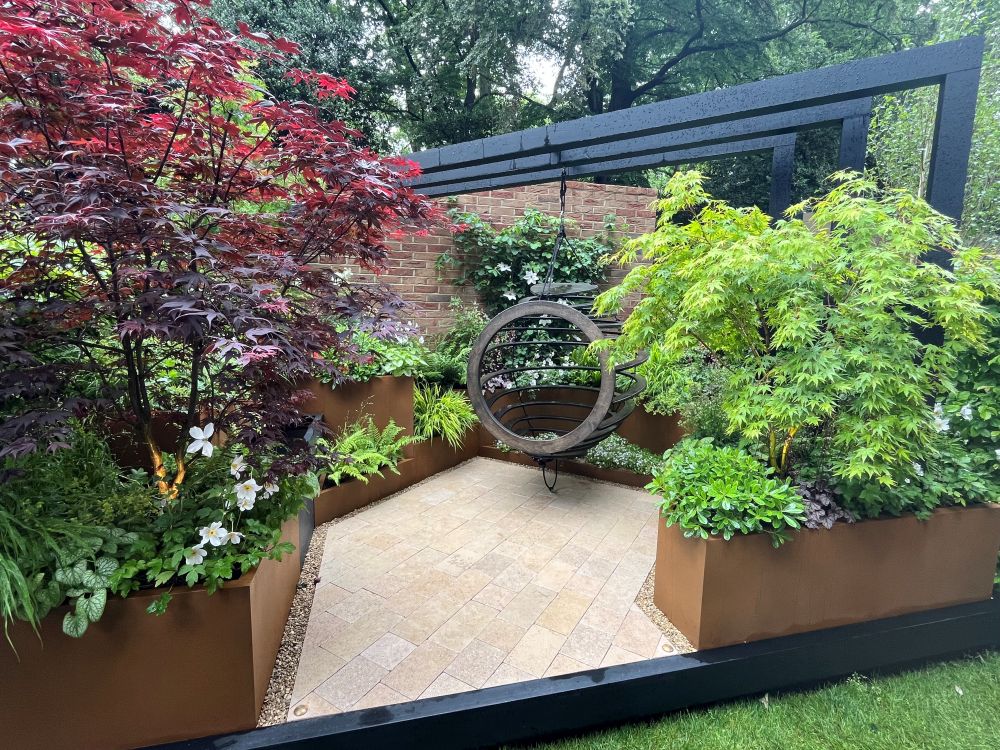
4. Water Features for All Spaces
- Chelsea often has impressive water features, but they are often so fantastical they are not realistic for the average garden. However, this year there were plenty of examples of beautiful but achievable water features to add a little extra to your design. In the Boodles Raindance Garden, a circular theme has been repeated throughout, with gently bubbling contemporary bowls and shallow pools.
- The ADHD Foundation Garden had a Corten steel reflection bowl in front of a bench to create a focal point on the path.
- Even on the balcony gardens, small scale water features were used to create sound and movement. My favourite was the small self-contained water feature in the Blue Mind Garden.
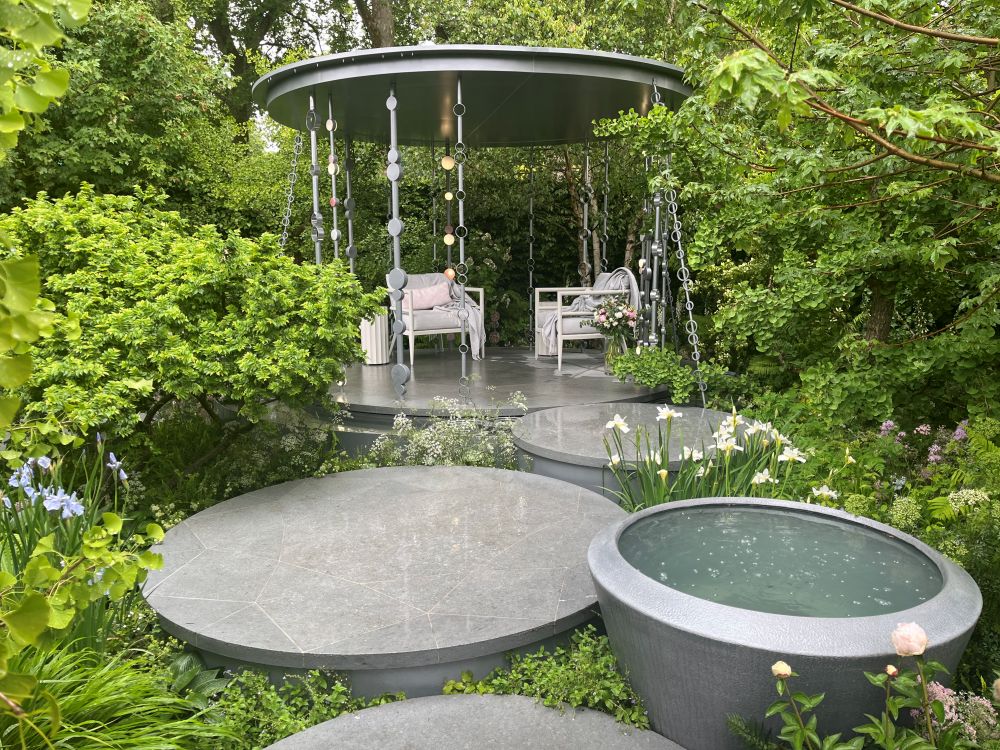
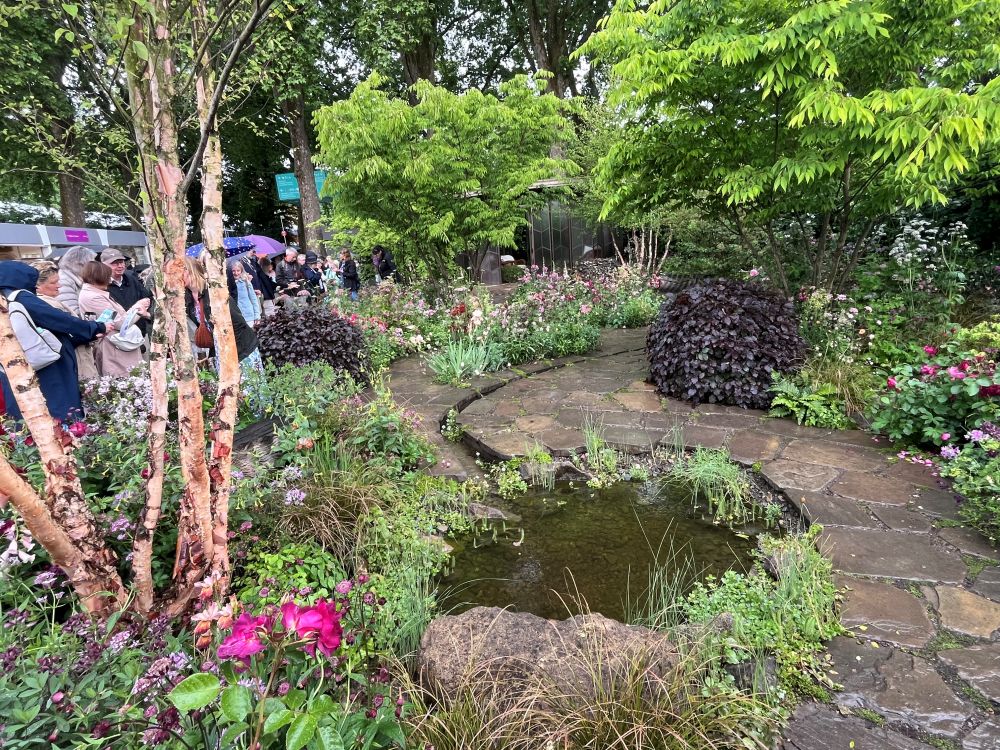
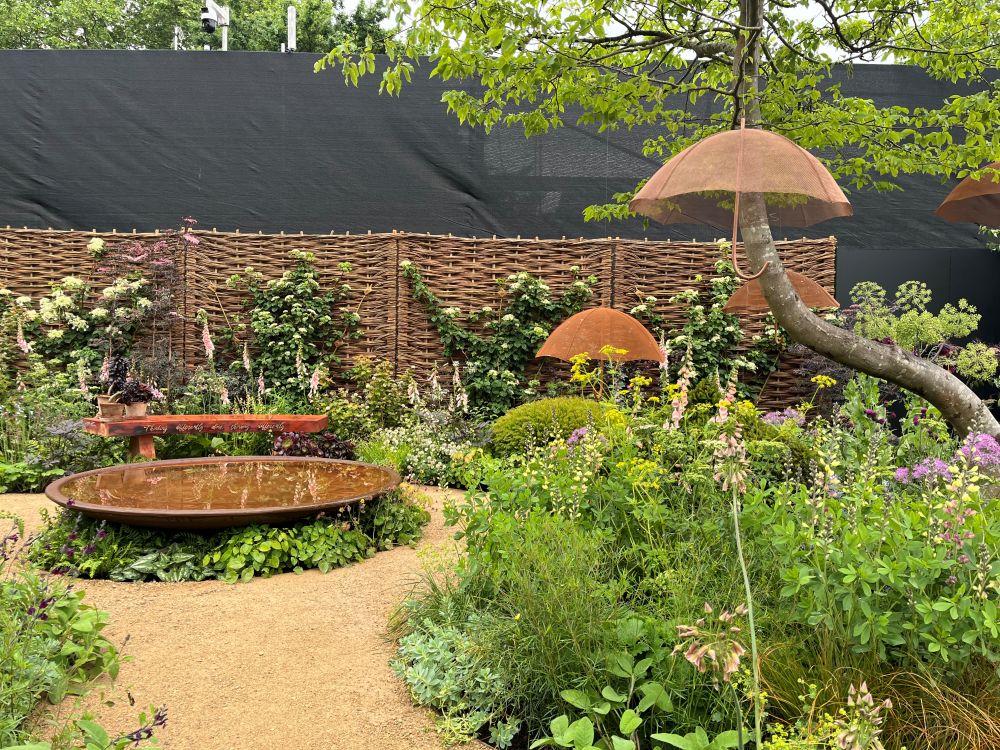
5. A Place to Escape
- Gardening for mental health and spiritual wellbeing continues to be a strong theme, with many of the gardens designed to encourage stillness and calm. With many of the gardens having covered seating areas, benches and places to pause throughout and lush planting, the idea of slowing down and escaping our fast-paced lives was really evident in the designs.
- The Cha no niwa Japanese Tea Garden, designed by Kazuyuki Ishihara, was a place for quiet reflection with beautiful Japanese Acers, trickling water features and raked gravel – it radiated calm.
- The Fettercairn Wilderness Retreat in the balcony gardens display included a striking copper bathtub for a cold-water plunge which brought the sound of moving water, and a sheltered seat provided space to breathe and relax.

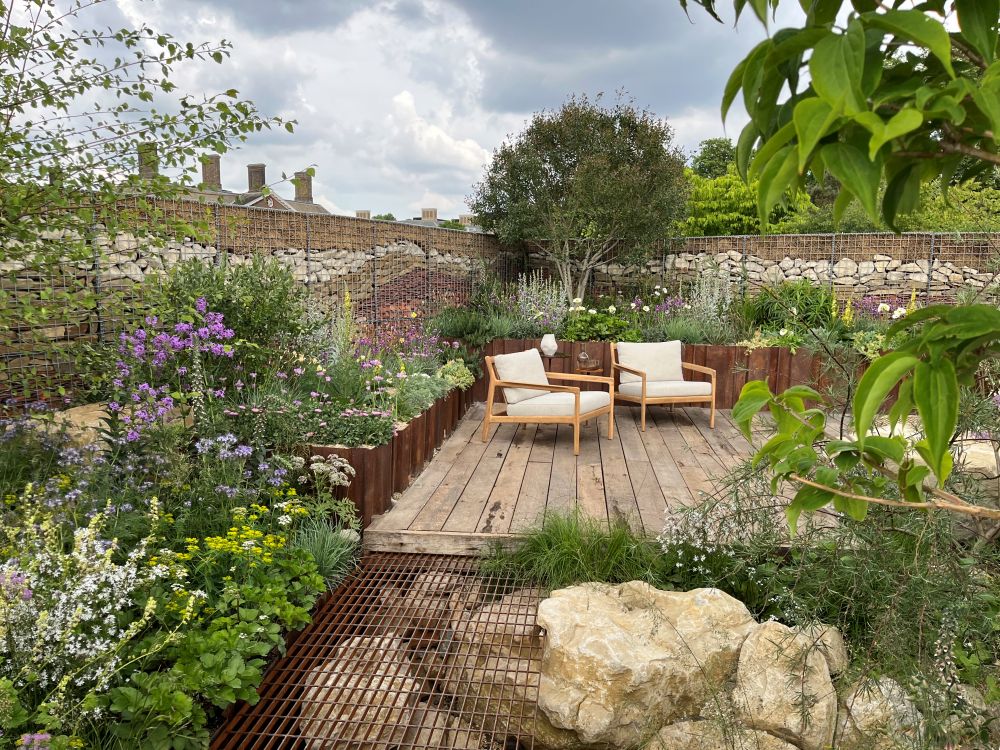
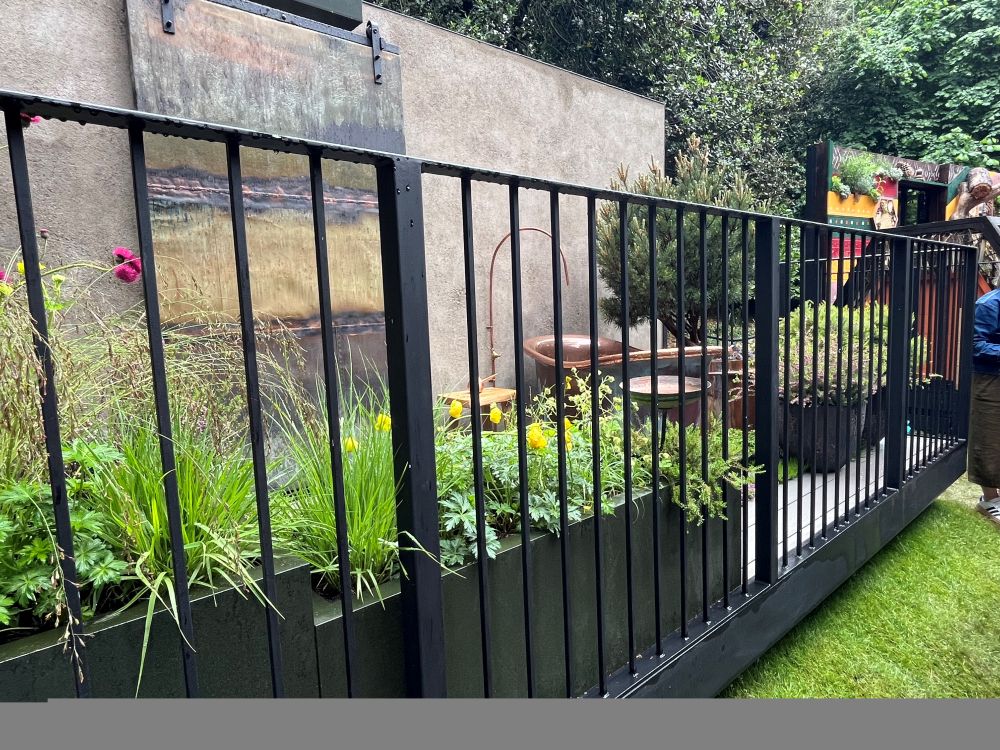
6. Cheerful Colour
- Planting schemes this year lent towards cottage style, with packed informal borders, using bold vibrant colours. Choosing colours for your garden is a very personal choice, but this year really showcased the wide variety of combinations that can be created, from calm and soothing to bright and cheerful. Purple and yellow featured heavily in many of the gardens in both bold and bright hues or softer pastel tones.
- One of the prettiest colour schemes for me was The Glasshouse Garden, with beautiful rich plum and red tones throughout. I also took note that roses were real showstoppers this year and seem to be making a comeback, planted amongst more wild airy planting, thus creating beautiful pops of colour.
- The RHS and BBC Radio 2 Dog Garden had planting beds full to the brim not only with lovely colour combinations but also interesting textures using clipped shrubs and feathery fennel.
- In the MS Amlin Peace of Mind balcony Garden, the designer had planted a colour wheel, which would be a really great way to get children involved in seeing plants and creating areas for different emotions.
- Of course, the pavilion was a riot of colour with beautiful display stands from growers. My favourites were Raymond Evison’s Clematis display, Blue Diamond’s garden centre display, all of the Hosta displays, and the Cape Flora South Africa display of Protea.
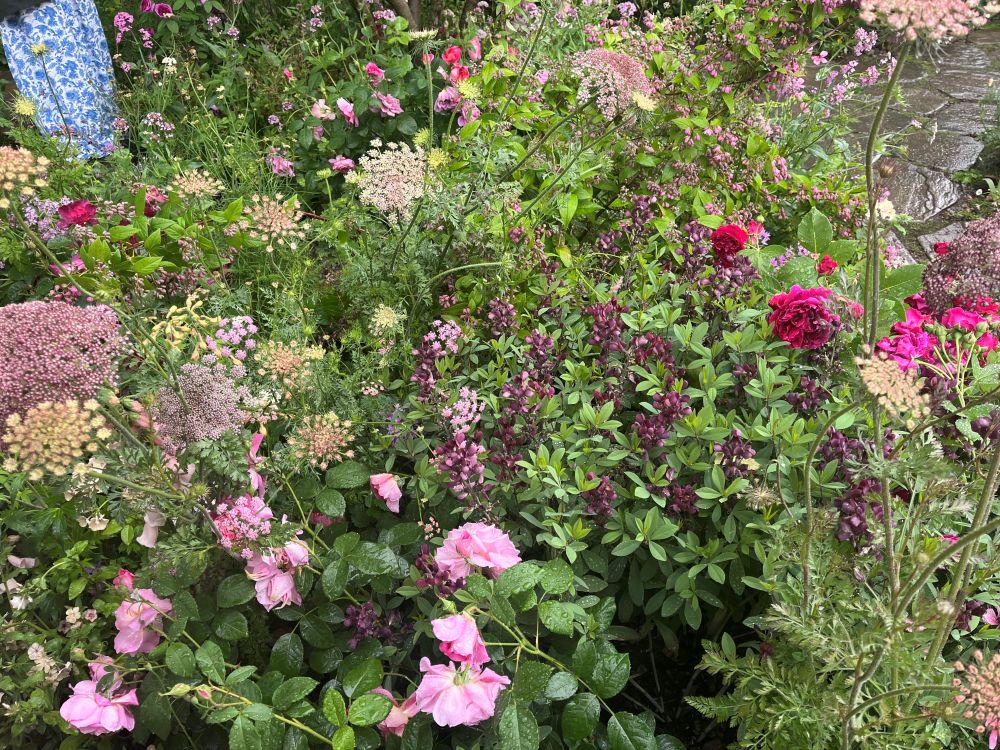
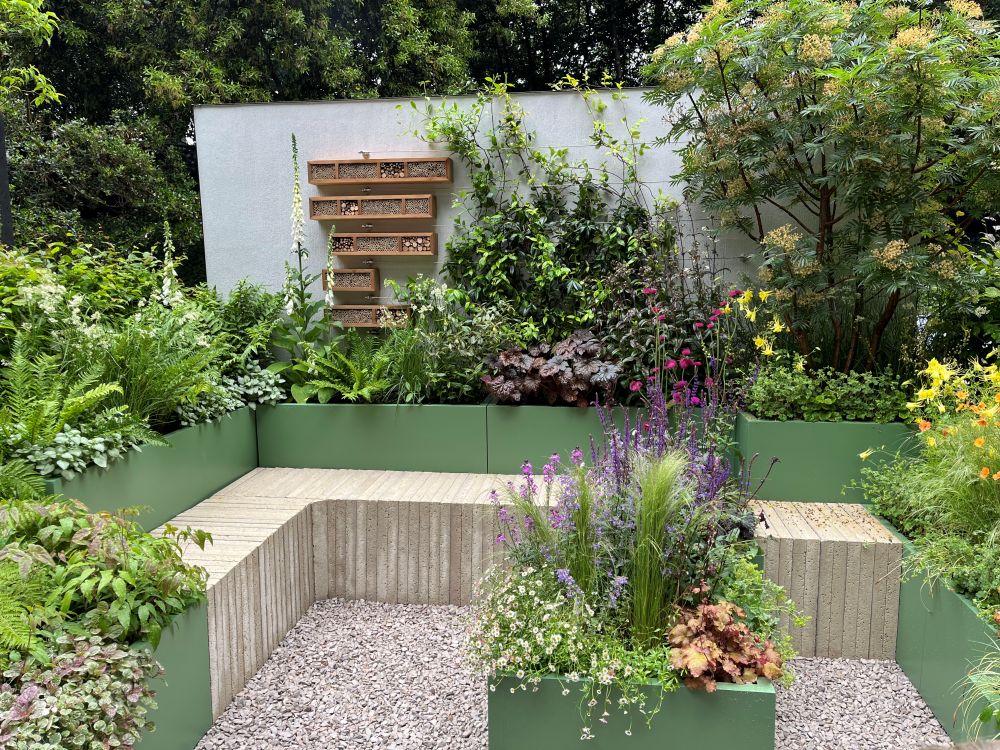
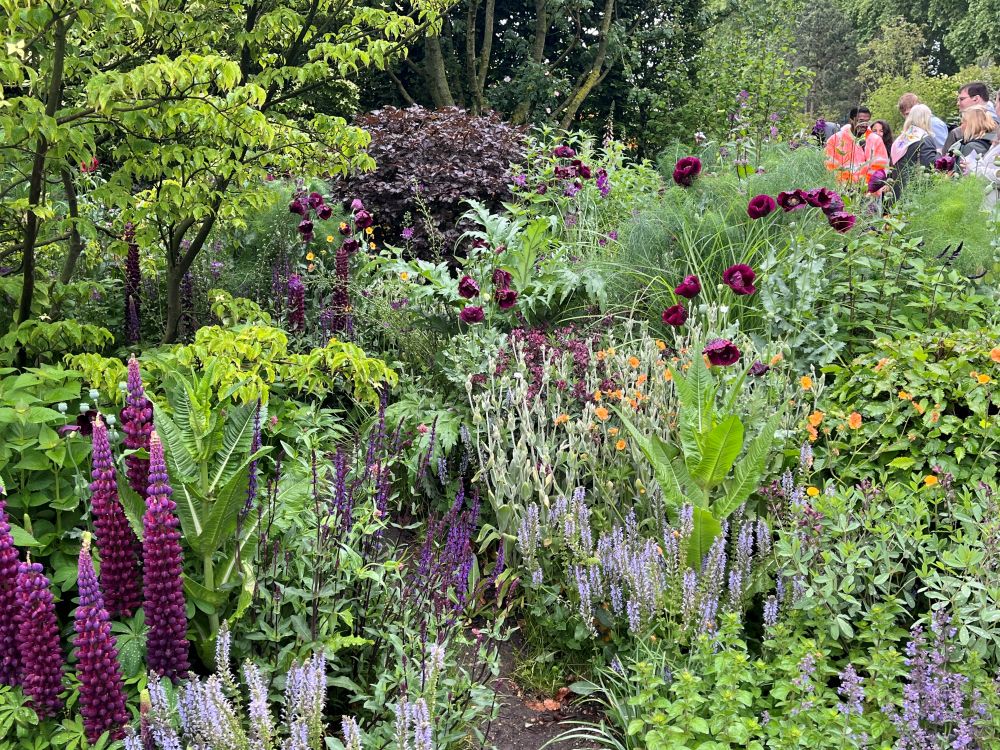
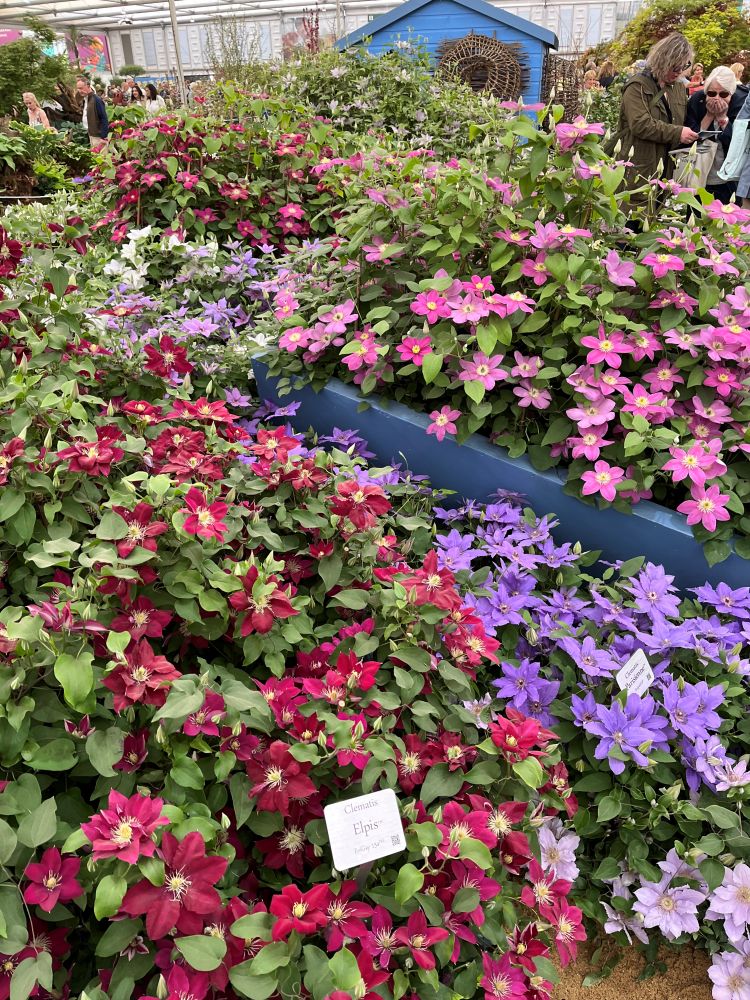
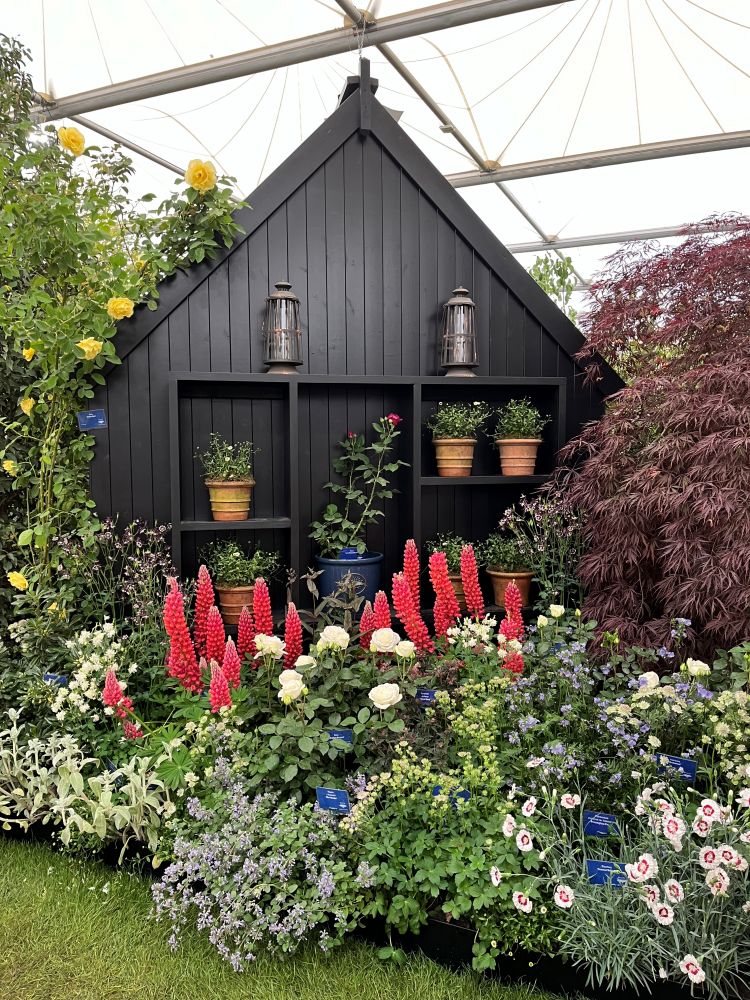
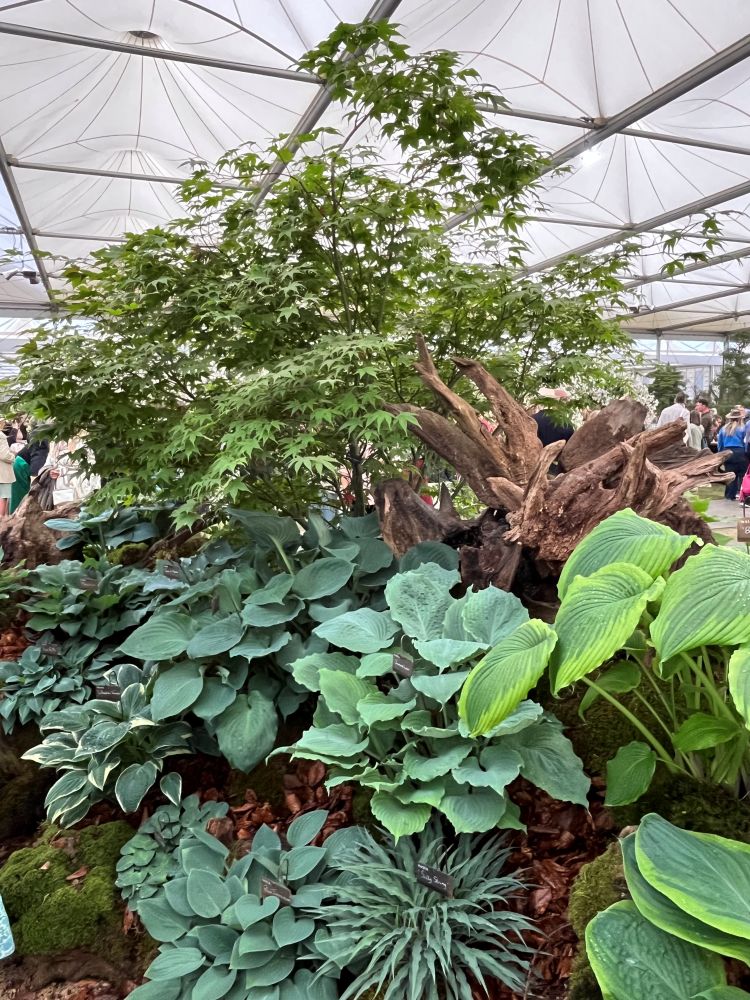
7. Managed Rewilding
- Embracing a little wild in the garden was still very much a feature of many of the show gardens, however this year, re-wilding felt softer with rainforest, woodland, and dune-like landscapes.
- It wasn’t untamed and untidy rewilding like we’ve seen in recent years. This version was more managed and more colourful.
- The Wildlife Trusts’ British Rainforest Garden showed that woodland planting and shady spots can be beautiful, wildlife friendly and relaxing to live with.
- As in previous years, there was an emphasis on plant resilience, however this year, the beauty of the plants as well as their resilience came across well. An example of this was Hospitalfields Arts Garden which showcased drought resilient, coastal planting on lovely curving ‘dunes’.
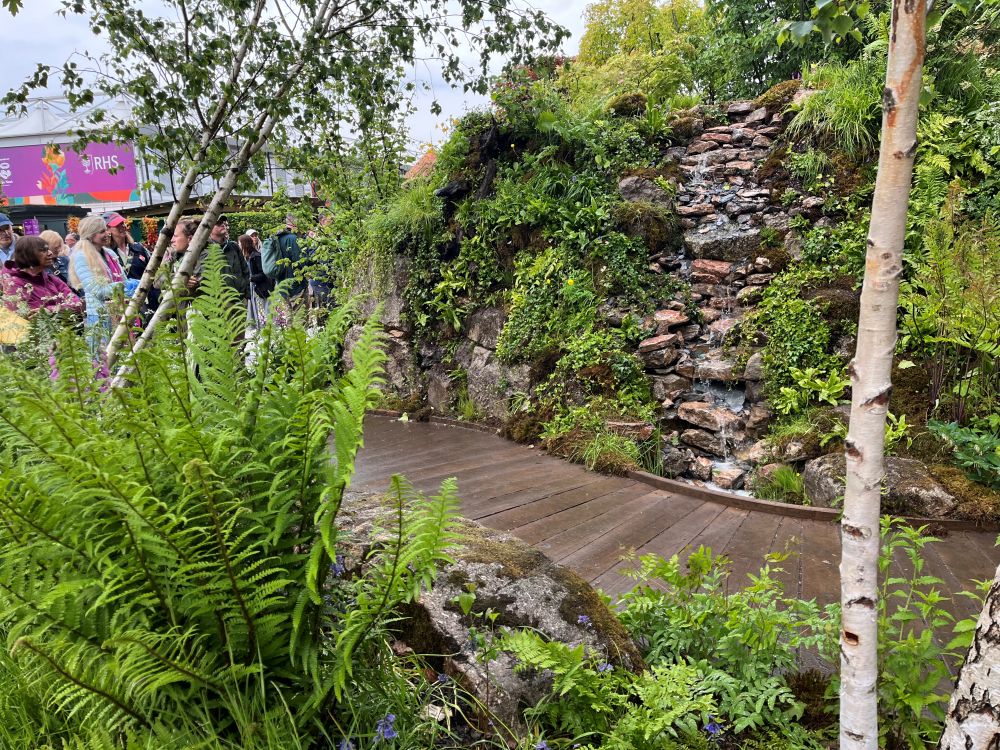
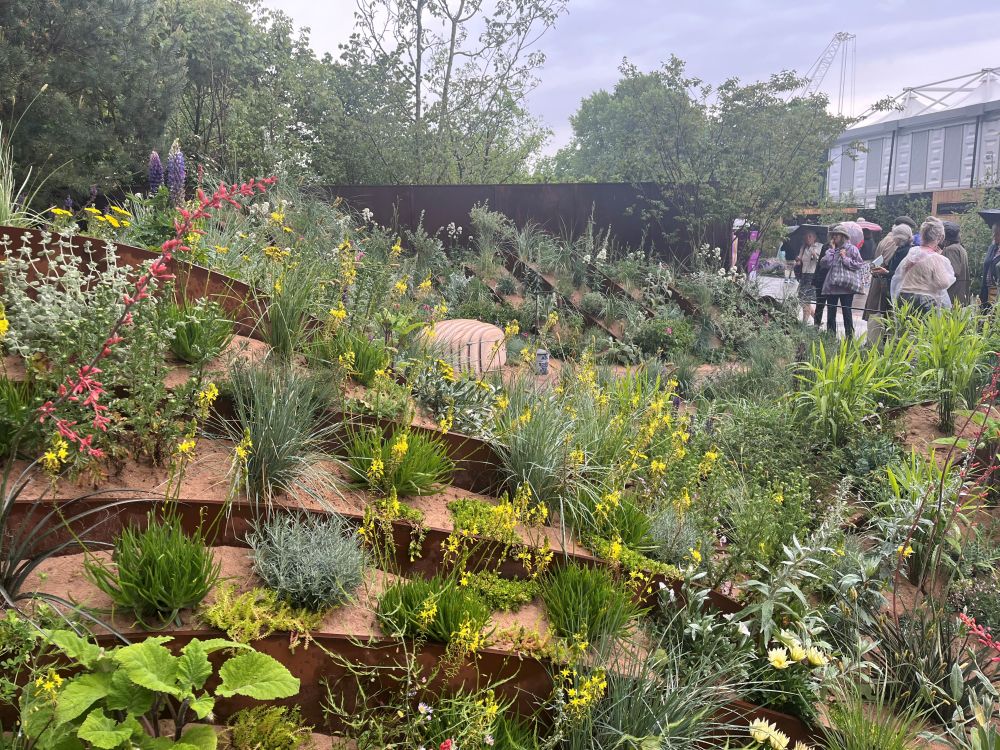
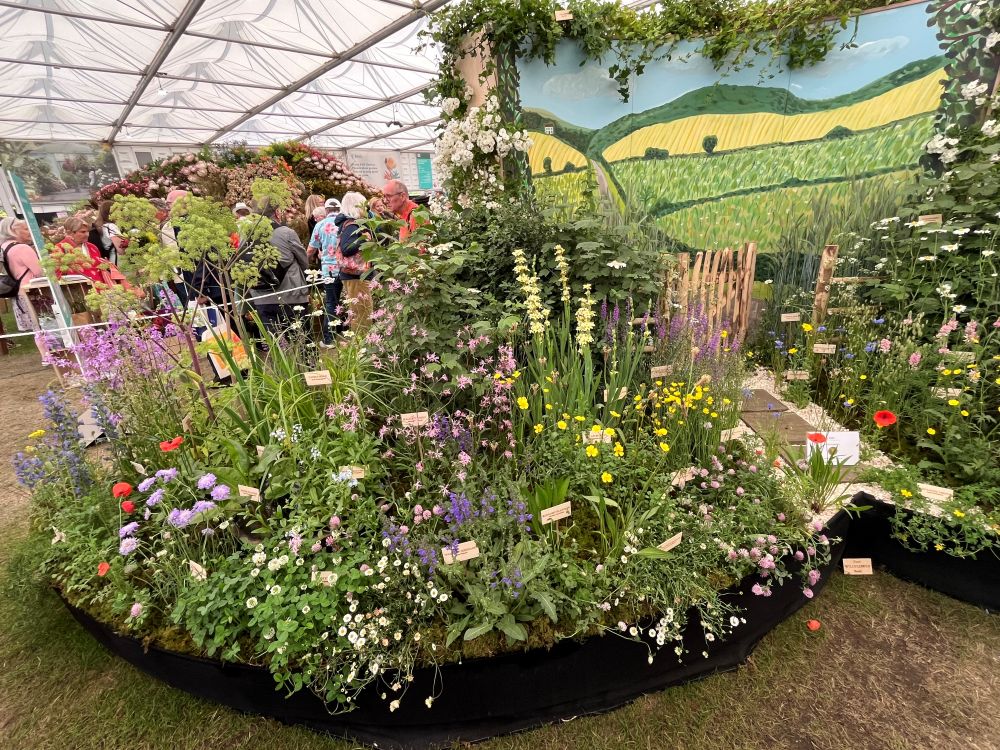
8. Trees For Any Sized Space
- One thing I was happy to see this year, was the use of trees, and I don’t mean the usual show stopping, very large tree often seen in past years but multi-stem, smaller, and sometimes native species.
- The Chinese Dogwoods looked particularly great this year along with the Japanese Acers.
- The use of smaller multi-stem species really showed how you can add height into the garden without blocking light, with many underplanted beautifully. The trees added extra texture and moved your eye through the space.
- Multi stem native species also looked wonderful in the show gardens, such as the River birch in The Glasshouse Garden, Hornbeams in The London Square Chelsea Pensioners Garden, and Field maples in the Boodles Raindance Garden.
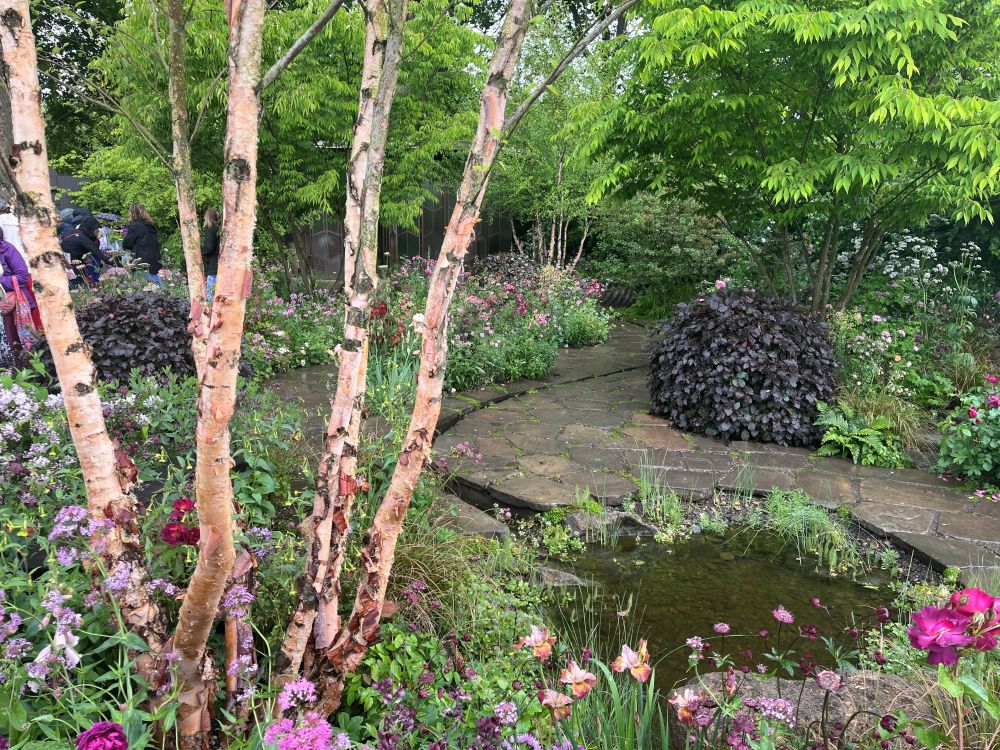
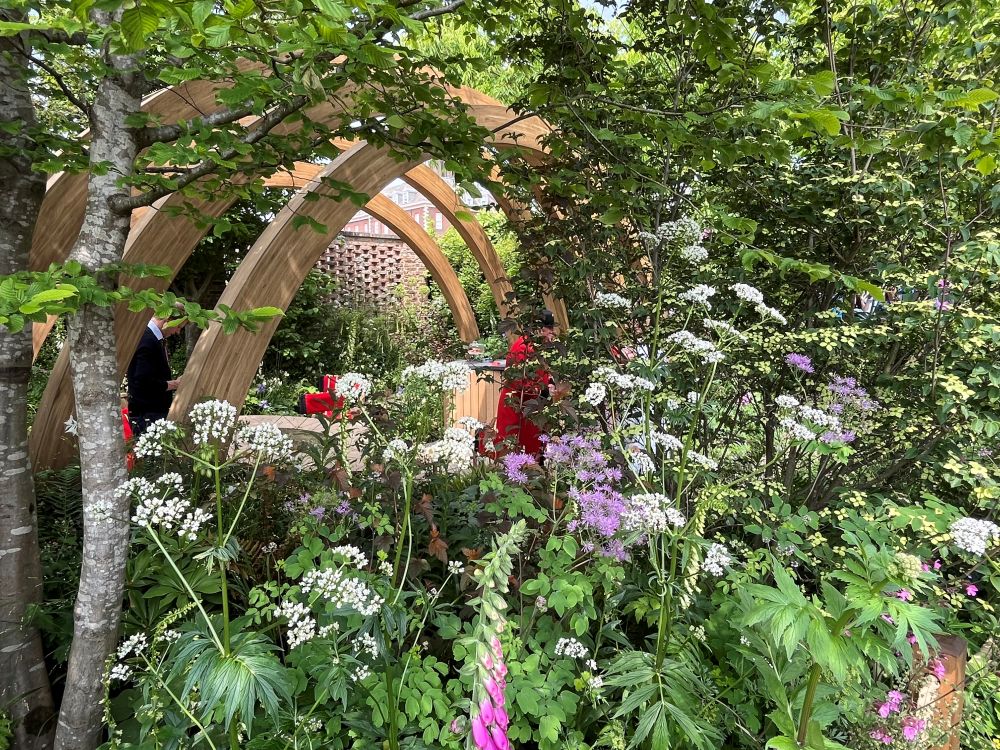
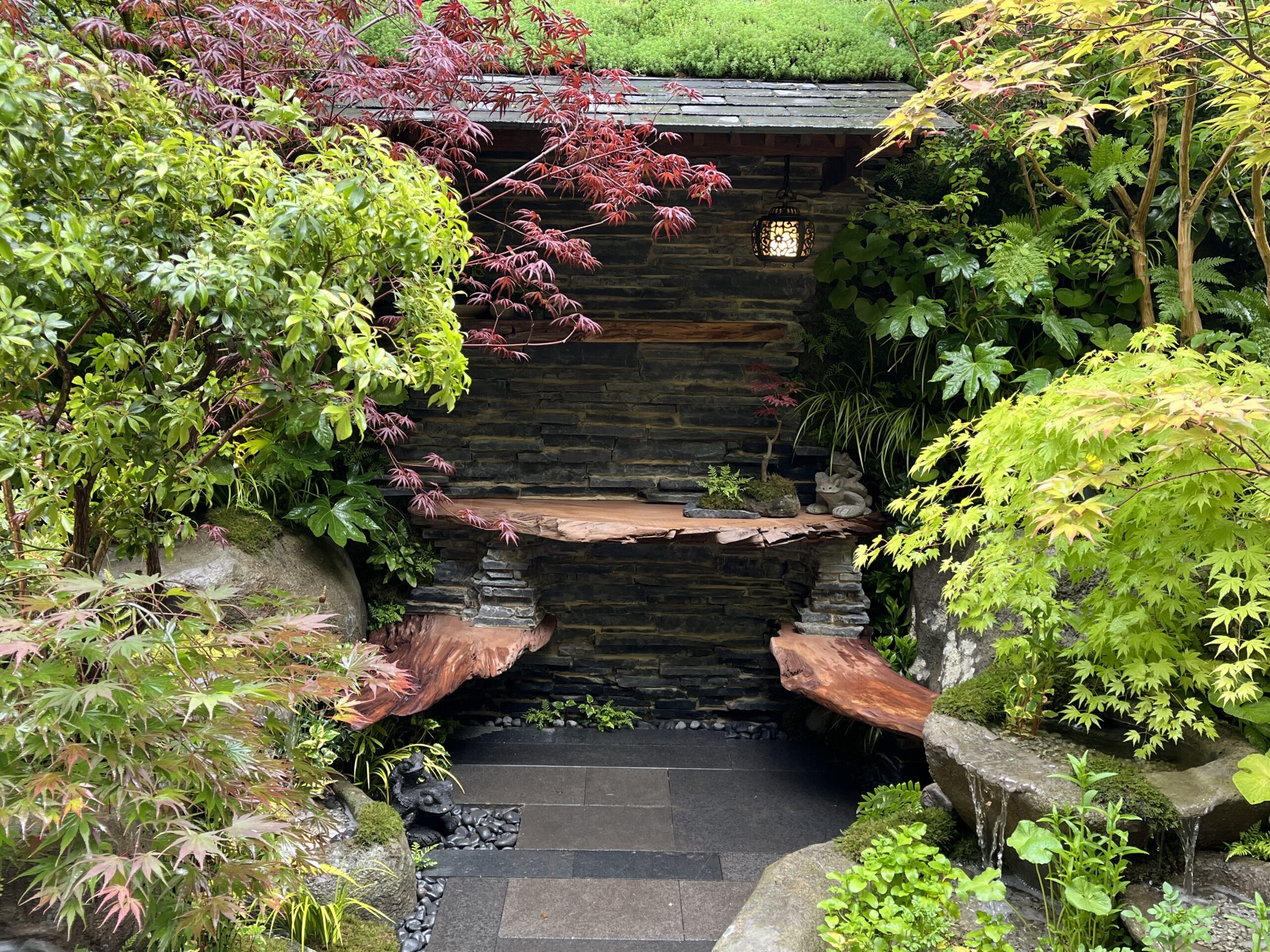
9. The Best of the Rest
Finally, here’s a selection of gardens with interesting designs and plant combinations that really took my eye this year…
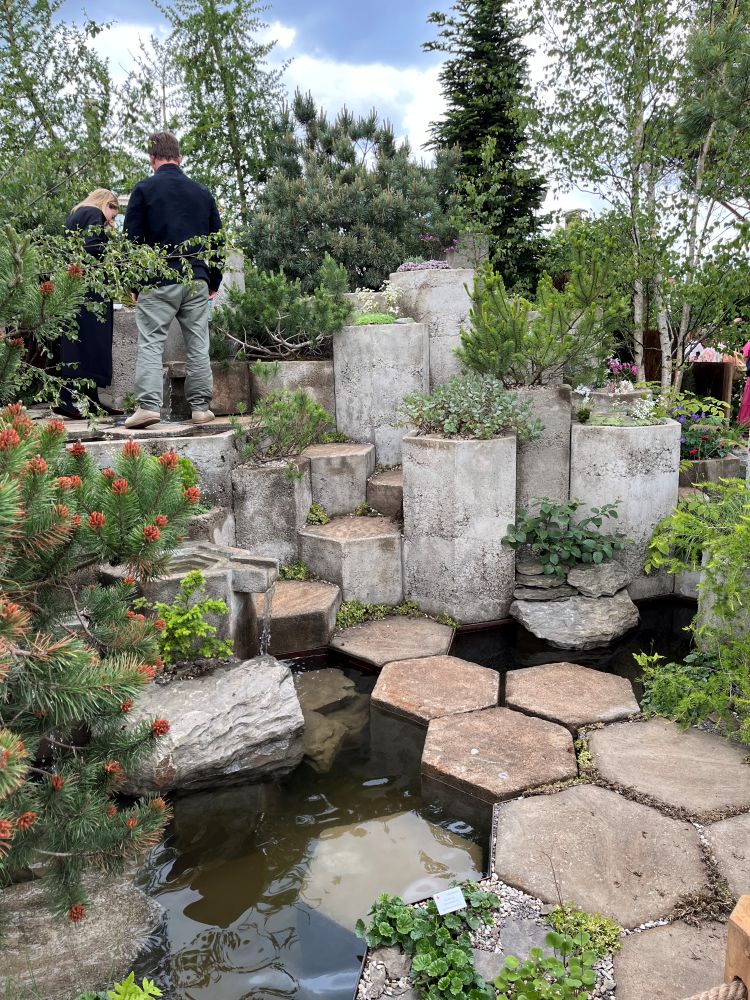
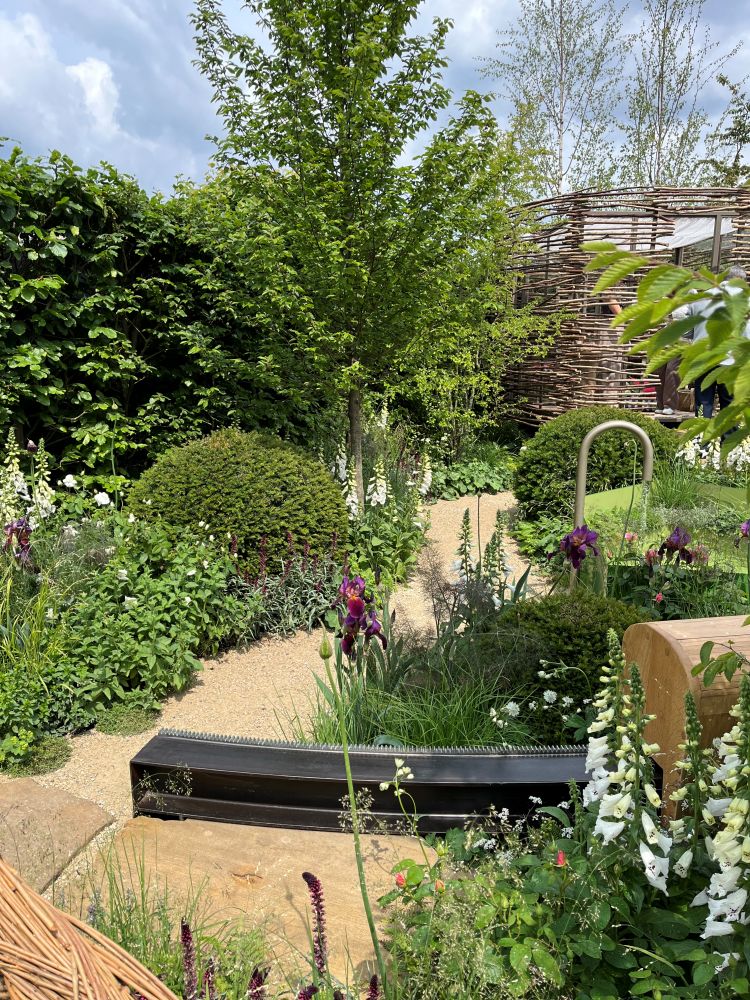
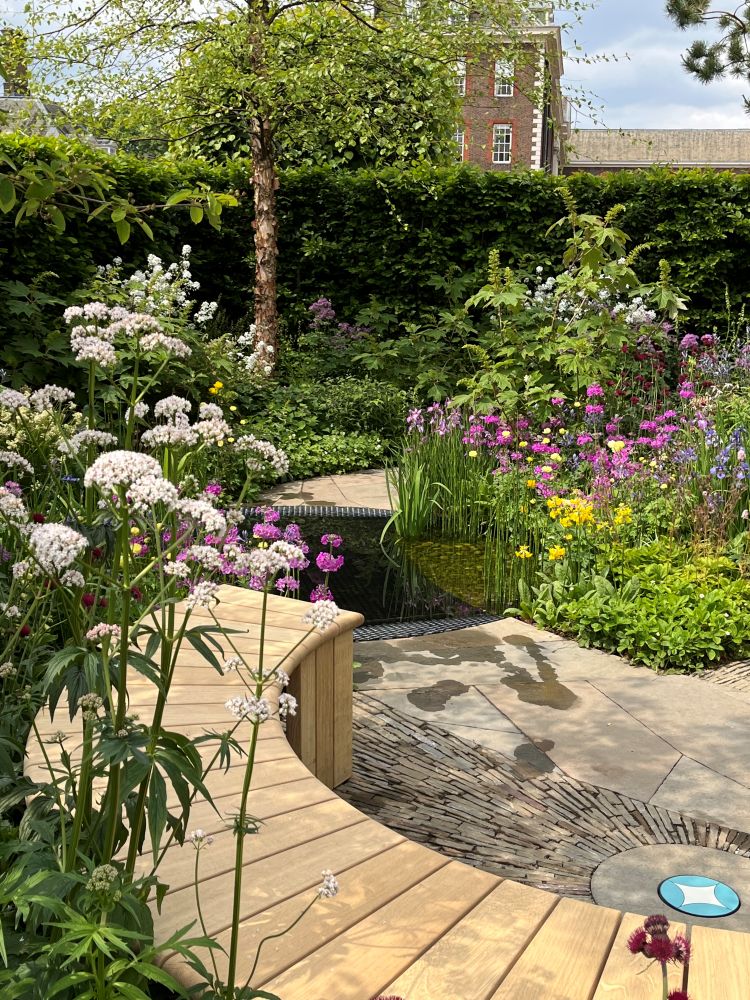
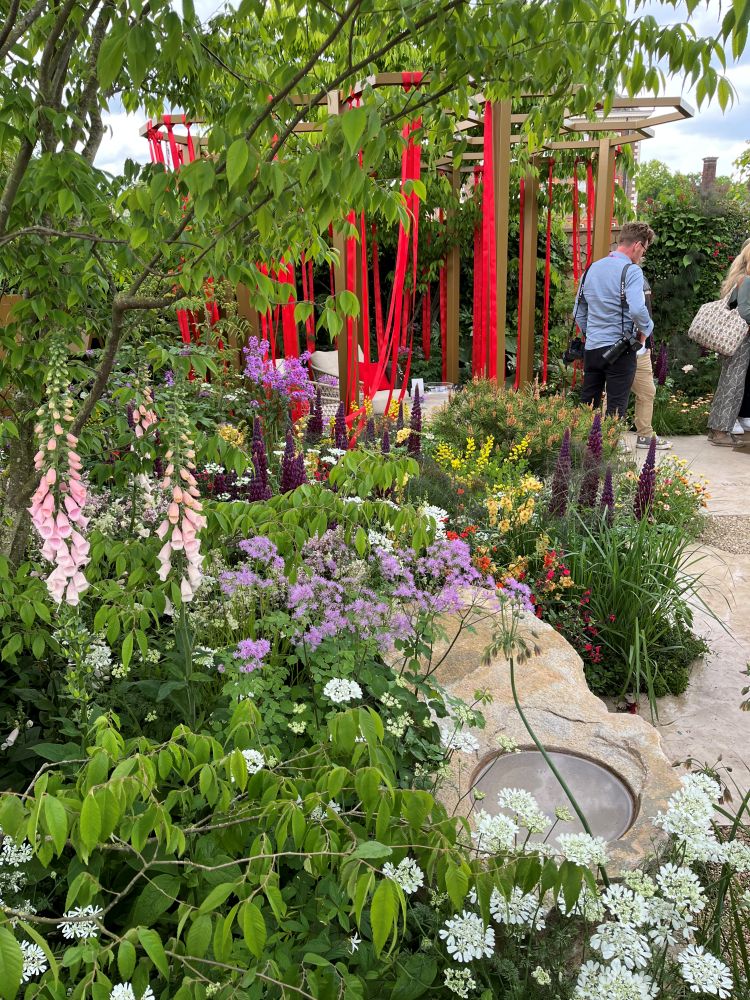
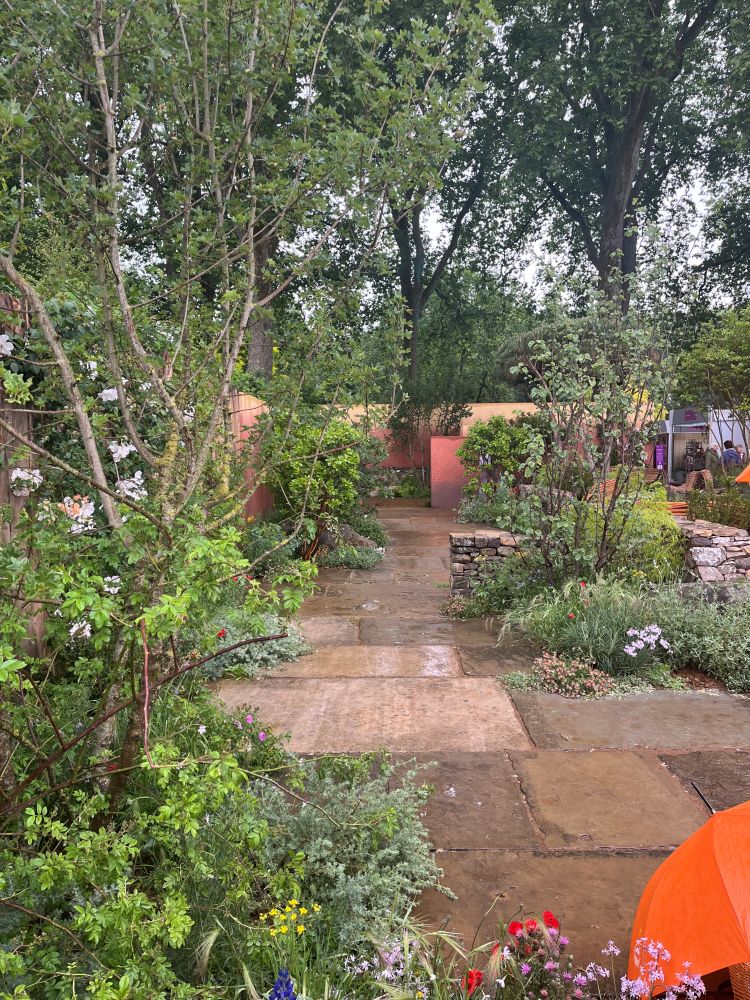
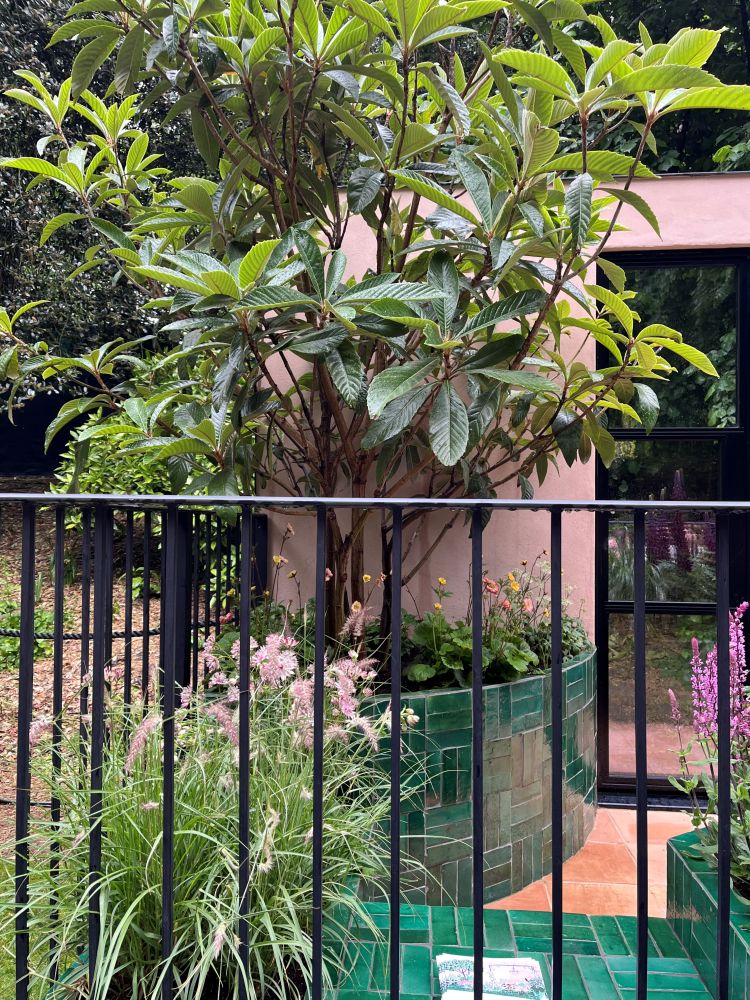

I hope you’ve enjoyed this snapshot of Chelsea Flower Show 2025. You can find out more information about the show and gardens here. Hopefully it’s given you some inspiration to try at home. If you’d like some help with this and you’re based in or around the Reading and Newbury area, we’d love to meet and discuss your project in detail – book your free no-obligation garden consultation today.